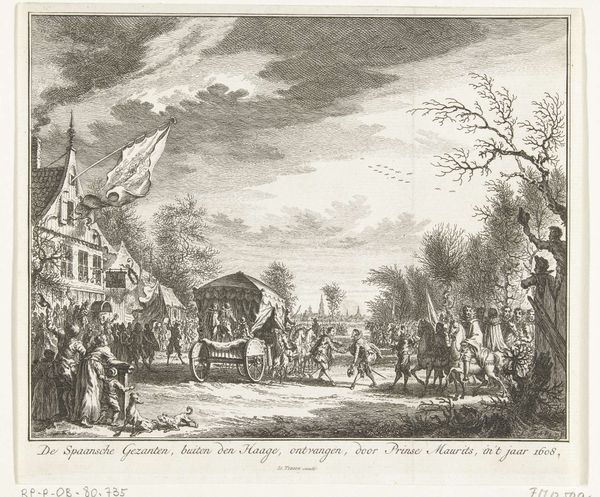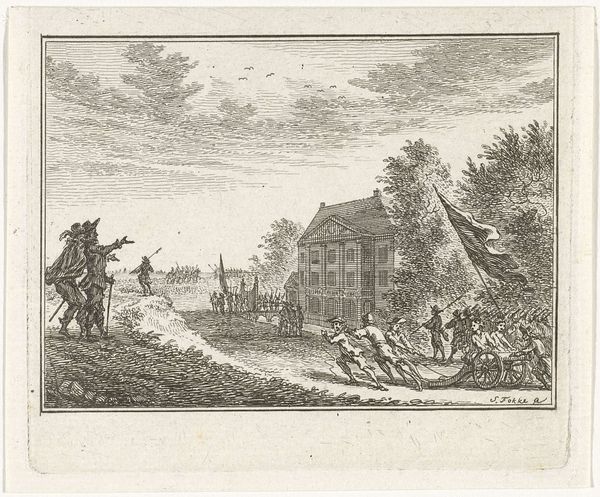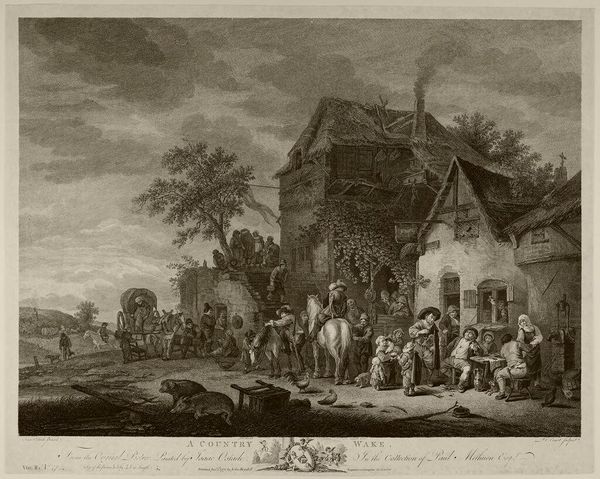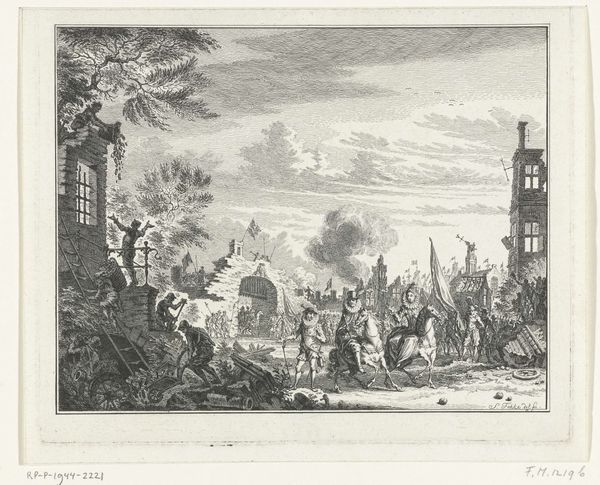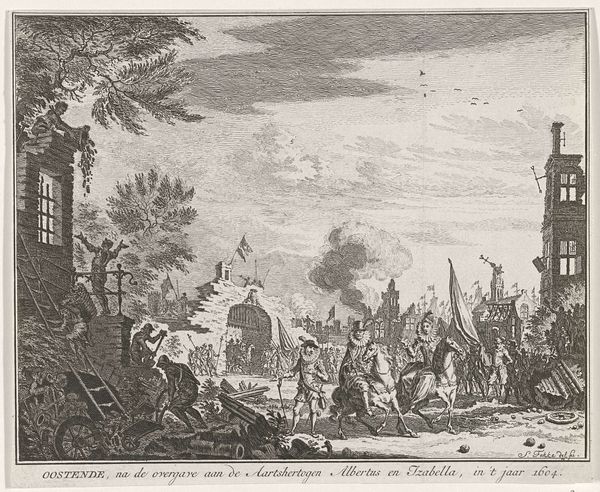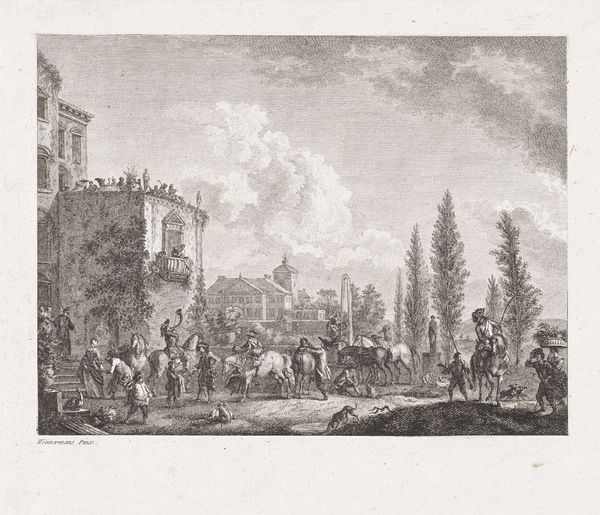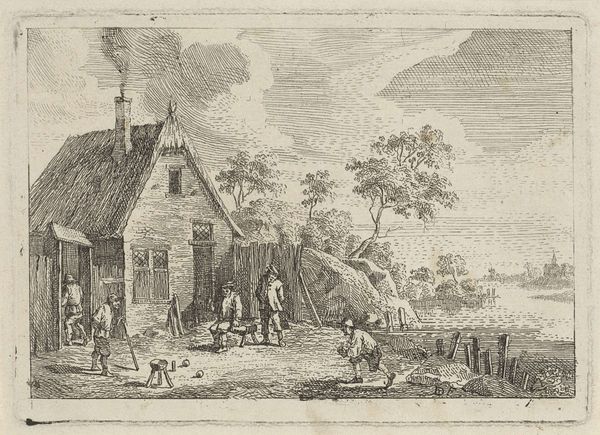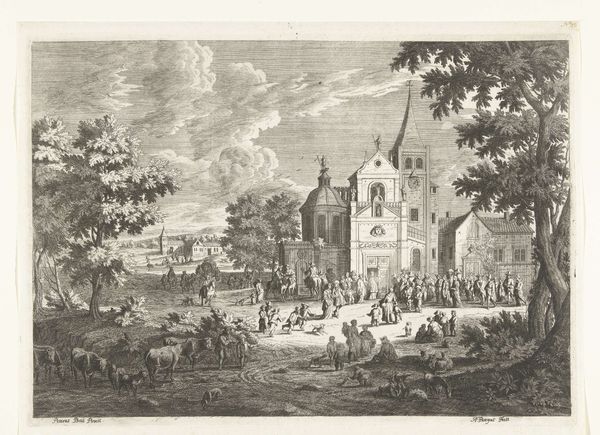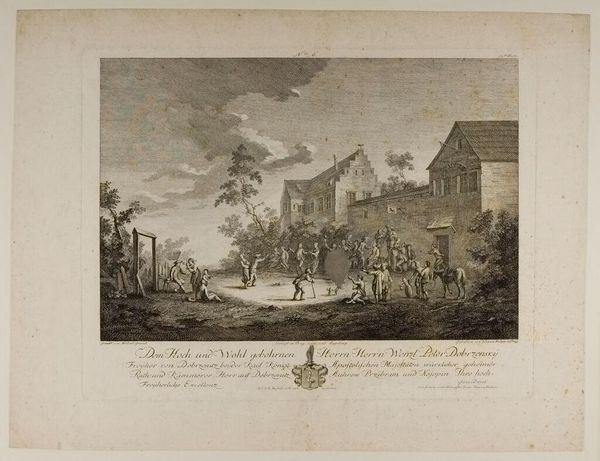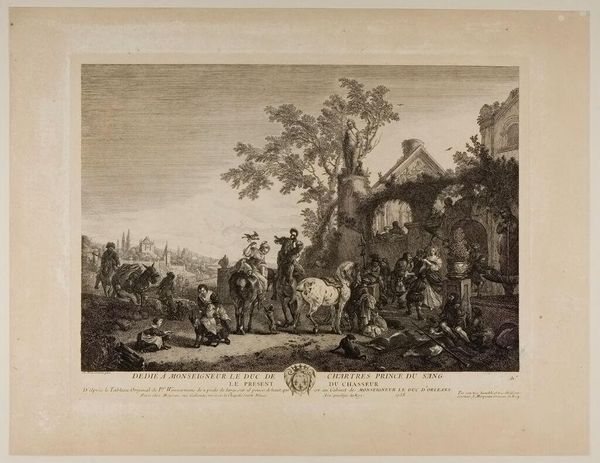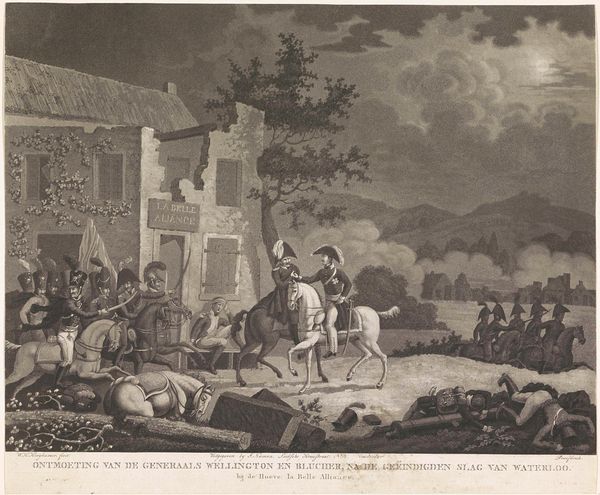
Dimensions: height 168 mm, width 202 mm
Copyright: Rijks Museum: Open Domain
Editor: This is "The Arrest of Henricus Slatius," an etching made by Simon Fokke in 1776, though it depicts an event from 1623. There's a somber feel to the scene, figures huddled together, with weapons, but the setting feels ordinary. What kind of story do you see in it? Curator: Well, first consider that Fokke made this print over 150 years after the event itself. We see not just an arrest, but a visual embodiment of religious and political conflict, distilled and remembered. Note how Slatius isn't presented as a lone figure, but caught amongst others, suggesting societal disruption, even capture. The spearmen carry a cultural echo, referencing authority, while the inn suggests a hidden, personal space violently invaded by the state. Editor: So, the tavern and the arms together create a deeper, darker meaning? Curator: Precisely. The tavern, usually a symbol of community, becomes the stage for betrayal. Those weapons… are they just tools of capture, or symbols of entrenched ideological clashes? And consider Slatius: who was he in collective memory, to be captured in print so many years later? Was he seen as a martyr, a troublemaker, or something in between? His ambiguous expression reflects this continuing ambivalence. Editor: That’s fascinating! The etching acts almost as a historical mirror, reflecting back the changing ways people viewed this event. Curator: Yes, art serves as a lens through which we observe not just events, but the evolution of meaning itself. The artist presents not just an image but also shapes our historical understanding. Editor: I’ll definitely be thinking about that “historical mirror” idea from now on! Thanks so much.
Comments
No comments
Be the first to comment and join the conversation on the ultimate creative platform.
